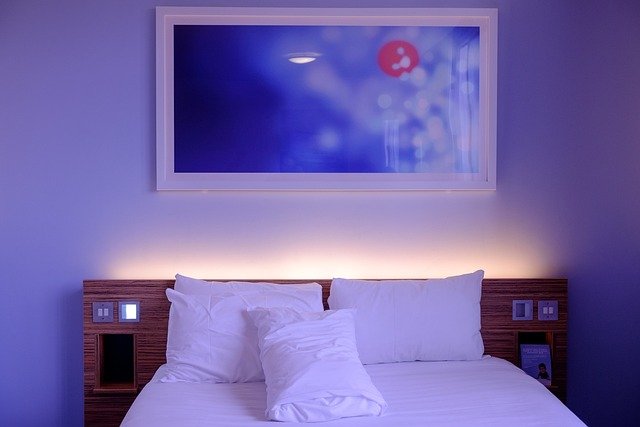Organizing Closets and Nightstands for Streamlined Morning Routines
A calm, efficient morning often begins the night before: thoughtful closet and nightstand organization reduces decision fatigue and fetch time. This article explains practical strategies for arranging storage, adjusting lighting and layout, and selecting textiles and accessories so that your morning routine feels deliberate, comfortable, and easier to maintain.

A streamlined morning routine starts with an intentional bedroom setup that reduces friction at the moment you wake. Arranging closets and nightstands to prioritize frequently used items, combining ergonomic placement with clear storage categories, and tuning lighting and ambience can all shorten preparation time and improve comfort. Consider the relationship between your sleep quality, mattress and bedding choices, and how accessible essentials like clothing, chargers, and eyewear are stored; small changes in layout and organization often yield larger gains in daily efficiency.
Storage and organization for faster mornings
Well-structured storage is the foundation of a fast morning routine. Start by decluttering: remove items you no longer use and sort clothing into seasonal groups. Use clear or labeled bins for accessories, and reserve open shelving or hooks for items you reach for daily. Drawer dividers and slim hangers increase usable space and make visual scanning quicker. Position frequently worn outfits and shoes at eye level or in the most accessible section of the closet, and keep a small basket for tomorrow’s essentials to eliminate decision-making during busy mornings.
Wardrobe layout that simplifies getting dressed
A wardrobe layout designed for workflow turns dressing into a predictable sequence. Arrange clothing by type and purpose—work, casual, active—and by color if that helps you choose faster. Keep a dedicated section for capsule pieces that pair reliably with other items. Consider ergonomics in hanger height and drawer placement so you can reach items without awkward bending. For multi-person households, use distinct zones or labeled sections to avoid mix-ups. A tidy, intentional layout reduces time spent searching and helps you put together outfits with minimal deliberation.
Nightstand placement: lighting and ergonomics
Nightstands should support both sleep and the first minutes of your day. Position them so essential items—alarm, glasses, water, a small torch—are within comfortable reach while seated. Choose lighting that offers layered control: a dim, warm bedside lamp for winding down and a brighter, directional option for quick tasks like checking a list or putting on shoes. Ergonomic placement avoids overstretching; keep charging cables organized and visible to prevent fumbling. A small tray or single-drawer system keeps frequently used items accessible but contained.
Textiles, bedding, and mattress choices for comfort
Textiles and mattress selection influence both how well you sleep and how you feel when you wake. A mattress that supports your sleep style and breathable bedding reduce nighttime disturbances and make mornings more pleasant. Keep a minimalist set of morning-ready textiles—an easy duvet, an accessible throw, and a pillow rotation system—to simplify bed-making. Store extra pillows and seasonal textiles in labeled bins or vacuum-sealed bags to free closet space. Natural, easy-care fabrics can speed laundering and reduce maintenance time throughout the week.
Ambience, acoustics, and airflow to wake comfortably
Morning comfort is shaped by ambience, acoustics, and airflow. Position lighting to mimic natural transitions: warmer tones for evenings and cooler, brighter light for morning wake-up routines. Soft rugs and textiles absorb sound and reduce harsh echoes, supporting a calmer environment. Ensure adequate ventilation and airflow to prevent stale air; even a short window opening or a low-noise fan can help. Thoughtful acoustics, combined with consistent lighting and air circulation, make waking less abrupt and help you move through your routine with less cognitive load.
Decor, headboard, rugs, and pillow arrangement
Decor and furniture choices affect functionality as much as aesthetics. A headboard with built-in shelves or a slim ledge can hold small essentials without cluttering the nightstand. Place rugs to guide foot traffic from bed to closet and reduce slip risk, while also defining zones visually. Arrange pillows so that the most-used ones are easy to remove and launder; decorative pillows can be stored separately to simplify bed-making. Balance decor elements so they support a clear, calming layout that prioritizes access and comfort over purely visual complexity.
Conclusion Organizing closets and nightstands with attention to accessibility, ergonomics, and ambience streamlines morning routines and reduces daily friction. By categorizing storage, refining wardrobe layout, optimizing nightstand placement and lighting, and choosing practical textiles, you create an environment that supports restful sleep and efficient mornings. Small, consistent adjustments to layout and organization can make preparation quicker and more predictable, helping you start each day with less stress and more focus.





